Learn how to roast vegetables perfectly every time! A simple step-by-step guide with ideal baking temperatures, how to slice any vegetable, the best oils for roasting, and how to season your veggies. It's everything you need to know!
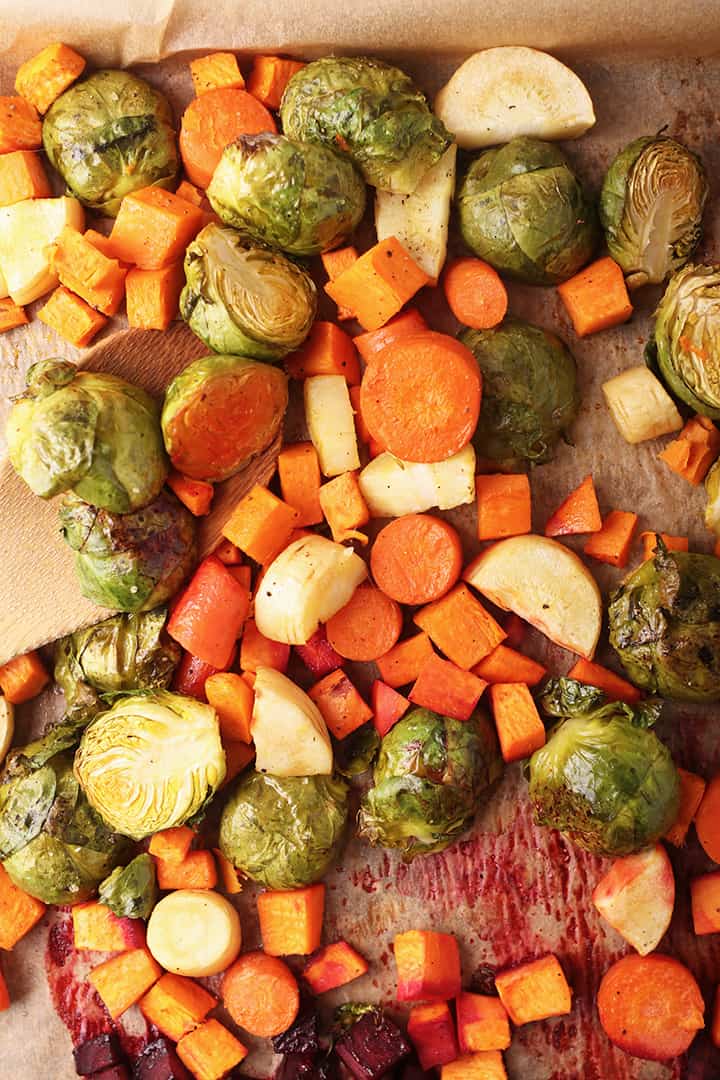
Disclosure: This post may contain affiliate links.
My goal on My Darling Vegan is to be a complete resource for all things vegan.
Beyond sharing healthy recipes and classic comfort foods, I also want to help teach you how to master the art of vegan cooking. And so I turned it to you, the readers. I asked YOU what skills you were looking to improve on and, from there, I compiled a list. Some of the most common questions have been about how to replace eggs and how to stock a vegan pantry, but I also received lots of questions on how to make certain cornerstone recipes.
So far we have covered how to make:
Over the next couple of months, I'll be addressing other commonly asked questions like how to make a flax egg, how to make the perfectly fluffy quinoa, and how to build your own salad bar. If there are other specific things you want help mastering, send me an email and I can add it to the list!
As for today, we are going to take a look at how to roast vegetables perfectly every time. I am a huge fan of roasted vegetables and with so many variations, it certainly seems like an excellent skill to master.
Let's take a closer look.
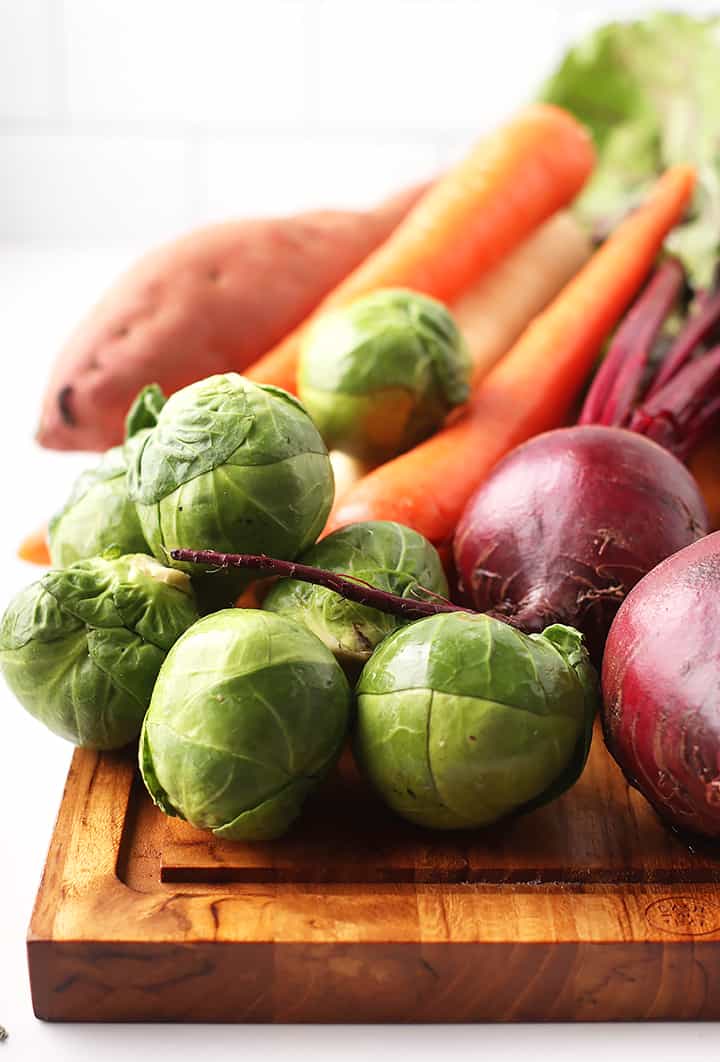
Best Vegetables for Roasting
There are so many vegetables to choose from!
Traditionally, root vegetables, such as carrots, parsnips, beets, and potatoes, are most commonly roasted. When roasted they are tender, buttery, and irresistible. Other vegetables to consider roasting are Brussels sprouts, broccoli, cauliflower, onions, bell peppers, and mushrooms.
Non-root vegetables are typically softer and do not take as long to roast. If you are combining root vegetables with non-root vegetables, I recommend roasting them on two separate sheet pans to allow for different roasting time. Alternatively, you can add the softer vegetables to the root vegetables halfway through baking if you are short on oven space.
Necessary Tools and Equipment
The following links are affiliate links. That means that I make a small commission when you purchase through these links at no extra cost to you. For more information please see my privacy policy.
Chef's Knife: You'll need a quality Chef's Knife. When it comes to knives, quality counts! Dull and cheap knives can be dangerous, especially when you are cutting through hard vegetables such as potatoes, as you have to use much more force to make an even cut.
Vegetable Peeler: A simple vegetable peeler is good to have for potatoes and beets. However, it's not entirely necessary. There is a lot of nutrients in the skins of these roots vegetables. If you decided to leave them on, just make sure you thoroughly wash the vegetables before cutting them.
Baking Sheets: When it comes to roasting vegetables, it is best not to overcrowd your baking sheets. I recommend using two large baking sheets to ensure that your vegetables are baking evenly, in a single layer with plenty of room.
How to Prepare the Vegetables
Wash and peel (if necessary) all your vegetables before chopping.
Root vegetables such as carrots, parsnips, beets, and potatoes should be cut into small even cubes or slices (I cut mine into ½" cubes). Make sure the vegetables are cut as uniformly as possible to get an even bake.
Softer vegetables such as Brussels sprouts, broccoli, cauliflower, and mushrooms can be roasted in larger pieces. Cut large Brussels sprouts in half. Smaller Brussels sprouts can be kept whole. Broccoli and cauliflower can be roasted as small florets, and button mushrooms are best roasted whole.
Once your vegetables are chopped, transfer them to a large bowl and toss them in olive oil, salt, and pepper.
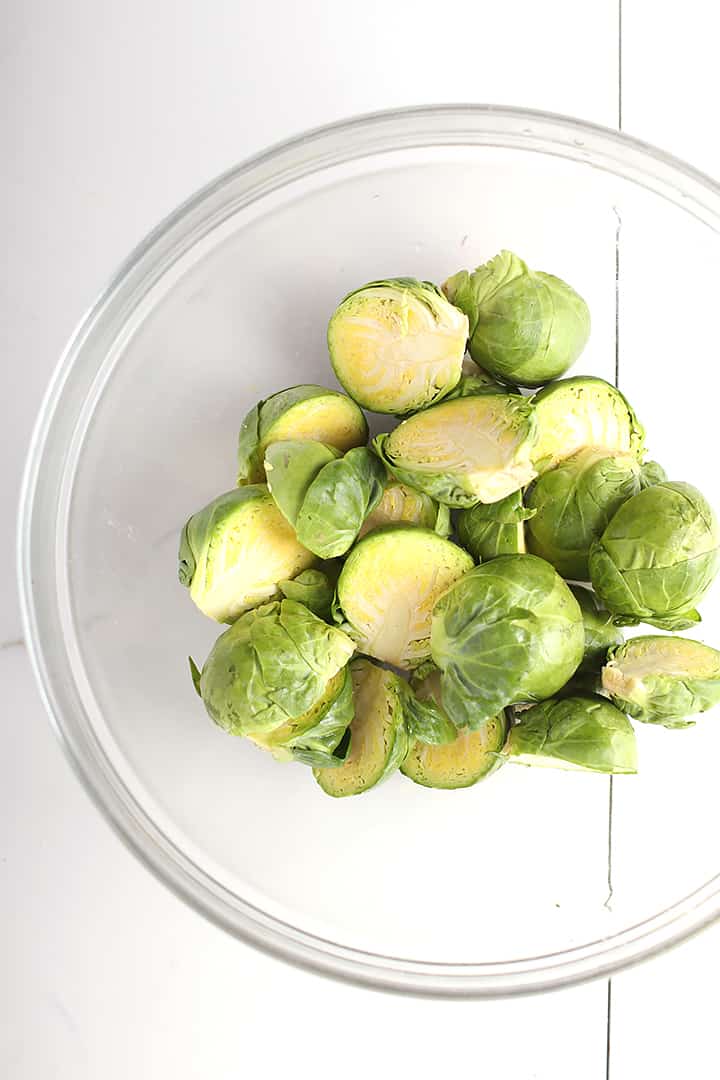
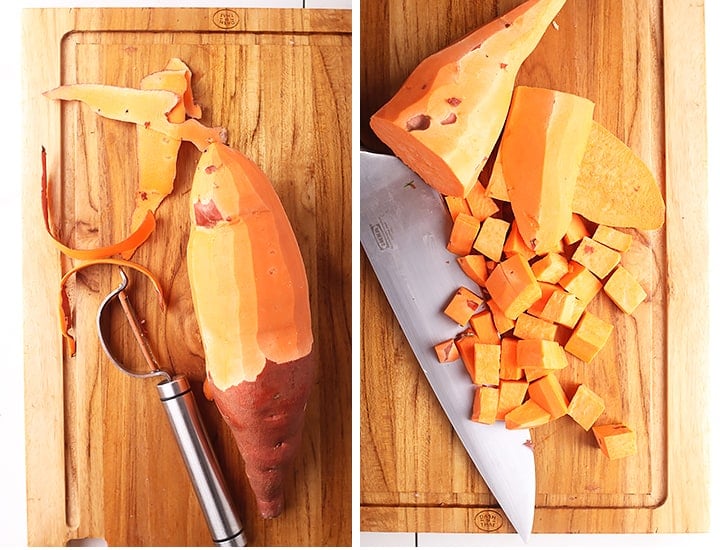
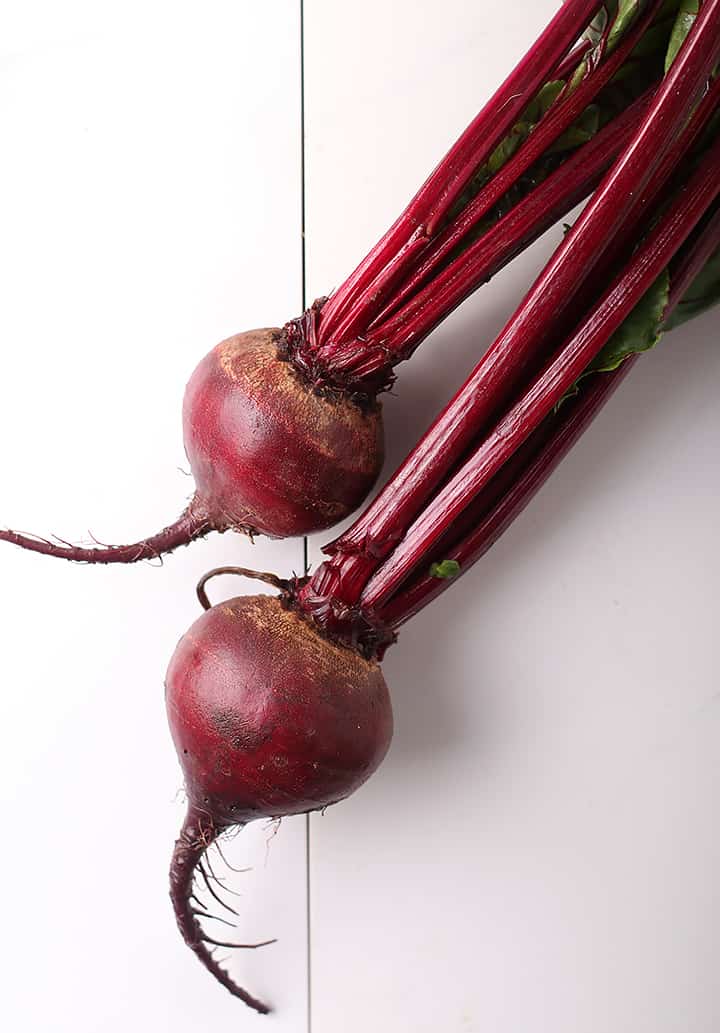
Best Oil For Roasted Vegetables
For roasted vegetables, I opt for olive oil. Olive oil is a healthier option and it has a subtle savory taste that pairs well with roasted vegetables. If you are using olive oil, stick to virgin olive oil, rather than extra virgin, as it has a higher smoke point.
Other good high heat oils for roasting vegetables are avocado oil or walnut oil. About 2 pounds of vegetables need between 1 and 2 tablespoons of oil. You want enough to coat the vegetables but not so much that they are greasy or oily.
I have found that mixing by hand is the most thorough way to evenly coat the vegetables in oil.
How to Season the Vegetables
I like to keep it simple. When roasting vegetables I most often use salt and pepper only. The combination of vegetables, olive oil, salt, and pepper is perfection!
Sometimes, especially in autumn, I like to add fresh herbs such as rosemary, thyme, or parsley to my vegetables. I also will occasionally add spice blends such as curry powder, chili powder, or Italian season, depending on what I am paring with my vegetables. If you are adding a dried spice blend, add between ½ and 1 teaspoon to the raw vegetables.
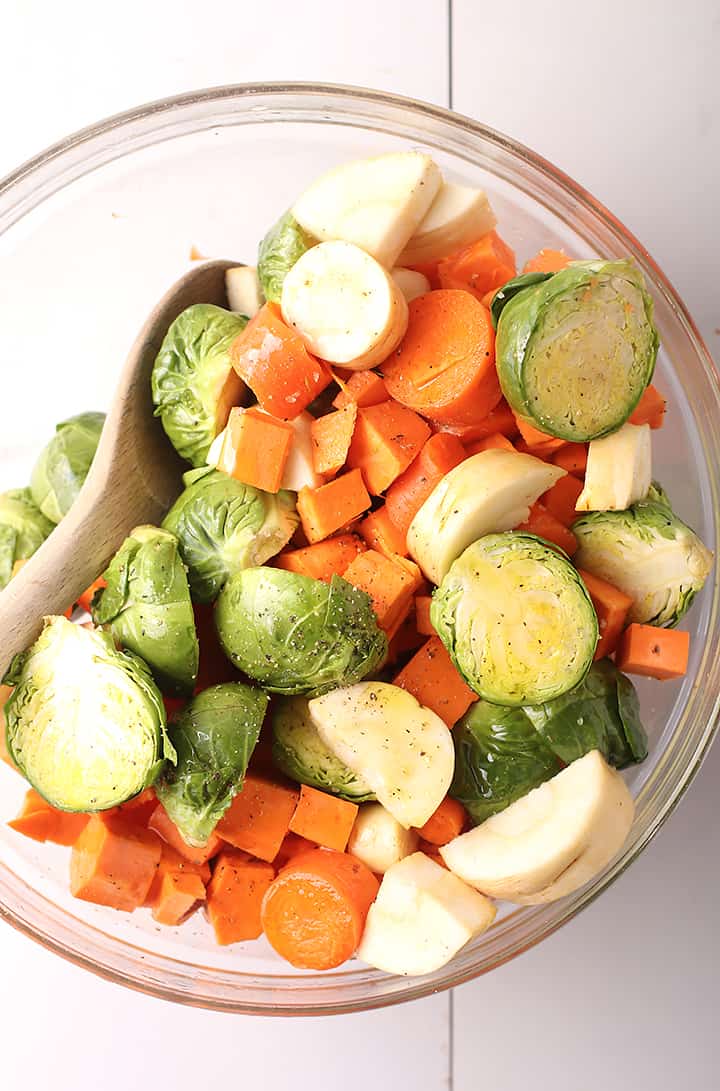
Estimated Cooking Times
I recommend roasting your vegetables in a hot oven, at least 425F. This gives the vegetables the delicious caramelized skin that adds so much flavor.
These are my estimated cooking times for vegetables roasted at 425F, cut into bite-sized pieces:
- Root vegetables (beets, potatoes, carrots, parsnips, onions): 30 to 40 minutes
- Squash (butternut squash, acorn squash): 20 to 30 minutes
- Crucifers (broccoli, cauliflower, Brussels sprouts): 20 to 30 minutes
- Soft vegetables (zucchini, green beans, asparagus, onions): 10 to 20 minutes
You can roast larger vegetables. When doing so, add about 10-20 minutes to the roasting time. Check vegetables every 10-15 minutes to check for charred crispy edges. Don't worry about being too exact with your baking times; roasting vegetables is not a science.
How to Tell When Vegetables are Done
When your vegetables start getting crispy edges, you're getting close! Keep them in the oven for about 10 minutes longer. The crispy edges are where so much of the flavor is so don't be worried about a little char.
In addition to blackened edges, you can check for doneness by piercing the larger pieces with a fork. They should be easily pierced but not so cooked that the vegetables start to fall apart.
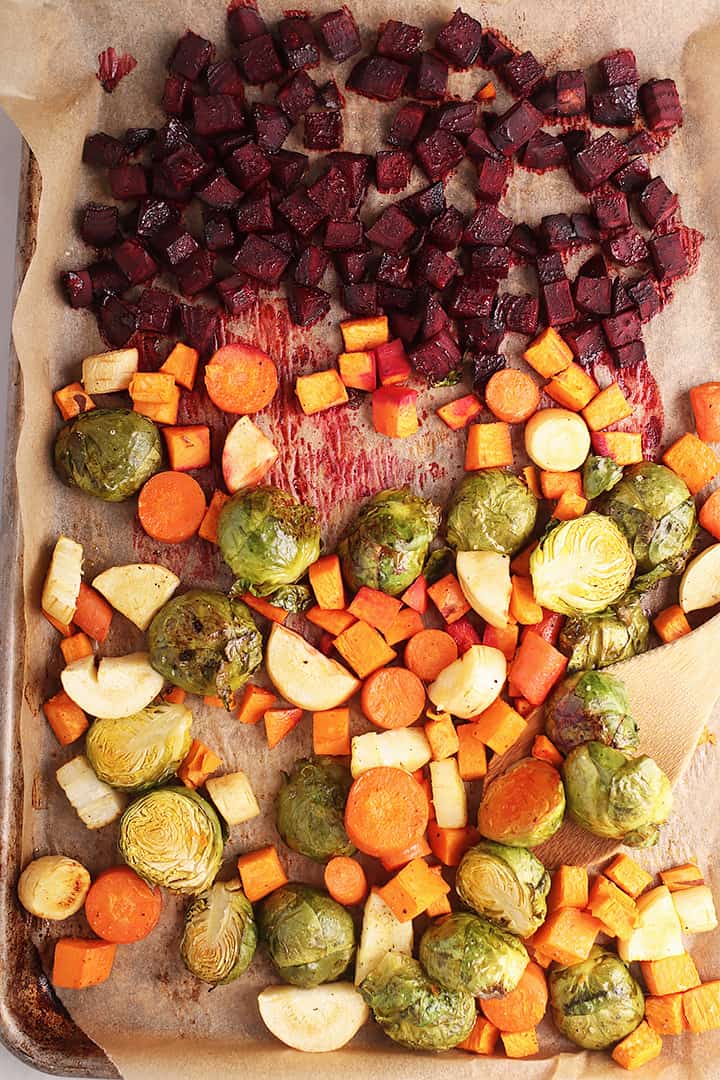
Serving and Storing
Serve these vegetables alongside a portobello steak, over pasta or a big salad, or simply on there own. Vegetables should be served warm and season with additional salt and pepper to taste.
Store leftover vegetables in an airtight container in the refrigerator for up to 2 days. Gently reheat them in the oven or on the stovetop with a bit of olive oil. This will help them crisp up again.
Tips and Tricks
- Be generous with your oil. You want to make sure the vegetables are evenly and thoroughly coated.
- Cut root vegetables roughly into a uniform size. If you are mixing your vegetables, it's a good idea to cut softer vegetables (like Brussels sprouts) larger than root vegetables.
- Make sure your oven is preheated to 425F before adding the vegetables. This will help the edges becomes caramelized and crispy.
- Season with salt and pepper and/or fresh herbs and spices.
More How-To Guides
- How to Make Cauliflower Rice
- How to Make Vegan Chocolate Ganache
- How to Make Perfectly Crispy Tofu
- How to Replace Eggs
- How to Stock a Vegan Pantry
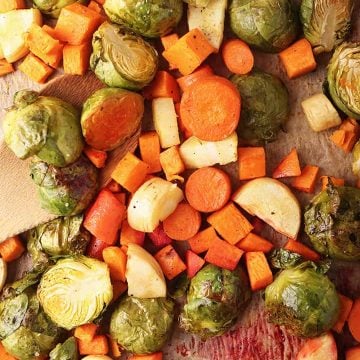
How to Roast Vegetables
Ingredients
Ingredients
- 2 lb assorted vegetables,
- 2 tbsp. olive oil
- ½ tsp. salt
- freshly ground pepper, to taste
Instructions
- Preheat the oven to 425F. Line two baking sheets with parchment paper and set aside.
- Peel and chop the vegetables. Cut the vegetables into uniform pieces so they cook evenly. Smaller pieces will cook more quickly; larger pieces will take a bit longer to cook. Vegetables like potatoes and beets, which take longer to roast, should be cut slightly smaller than other vegetables if they are being roasted together. I typically cut my root vegetables into ½" cubes.
- Transfer the vegetables to a large bowl and toss with olive oil, salt, and pepper. The best way to ensure uniformity is to toss the vegetables by hand. Once they are coated, spread them onto a single layer of both baking sheets.
- Bake for about 30 minutes, depending on the vegetables you are roasting. Softer vegetables will take closer to 20 minutes whereas some root vegetables might take as long as 40. Bake, checking every 10 minutes until they are slightly blackened and cooked all the way through. They should be easily pierced with a knife.
- Remove from heat, transfer to a serving platter. Taste and adjust seasoning and serve.
Notes
- Be generous with your oil. You want to make sure the vegetables are evenly and thoroughly coated.
- Cut root vegetables roughly into a uniform size. If you are mixing your vegetables, it's a good idea to cut softer vegetables (like Brussels sprouts) larger than root vegetables.
- Make sure your oven is preheated to 425F before adding the vegetables. This will help the edges becomes caramelized and crispy.
- Season with salt and pepper and/or fresh herbs and spices.
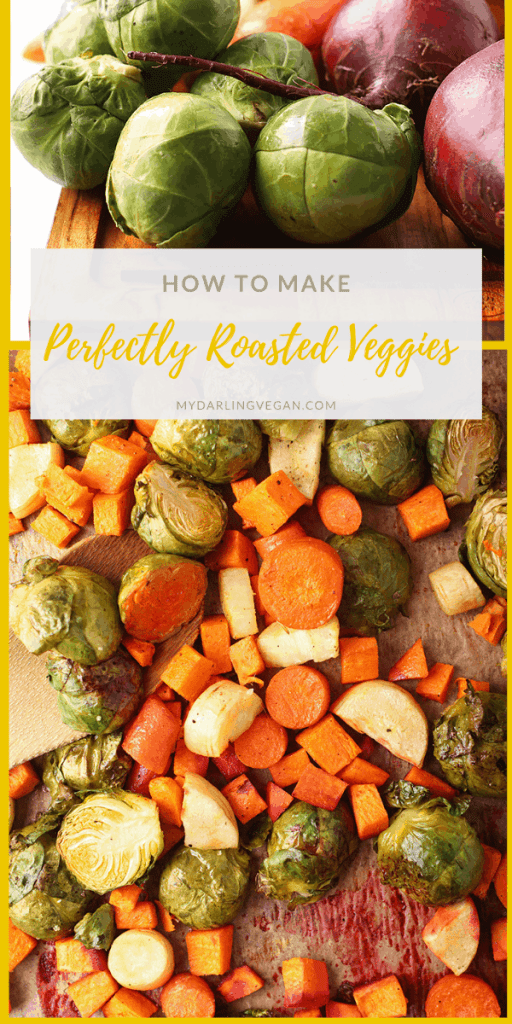
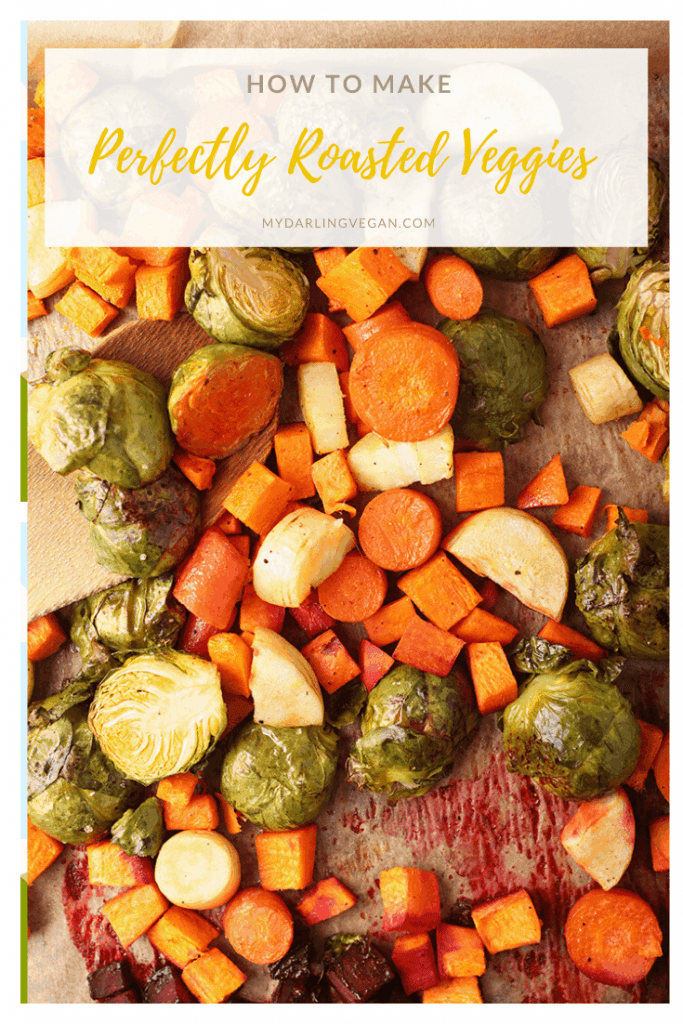
 Hi, I’m Sarah. I’m a 14-year (and counting) vegan, professionally trained photographer, former pastry chef, founder of My Darling Vegan, and author of the
Hi, I’m Sarah. I’m a 14-year (and counting) vegan, professionally trained photographer, former pastry chef, founder of My Darling Vegan, and author of the
Leslie says
Thank you for this. An excellent primer on roasting vegetables!